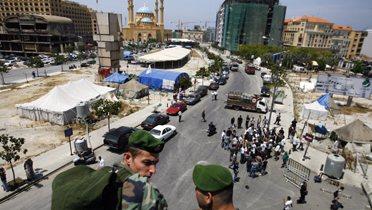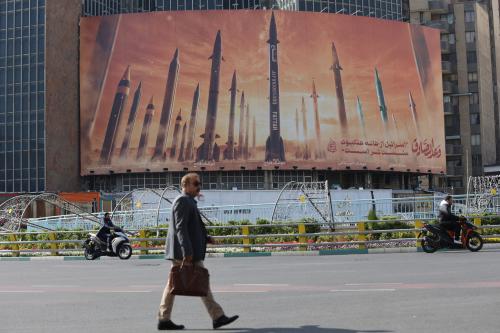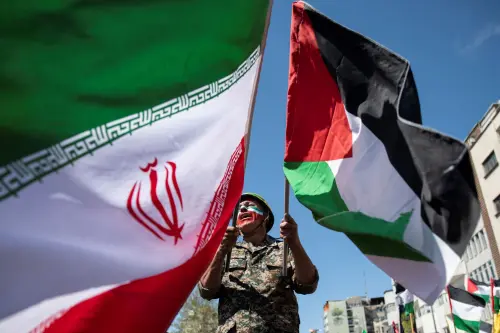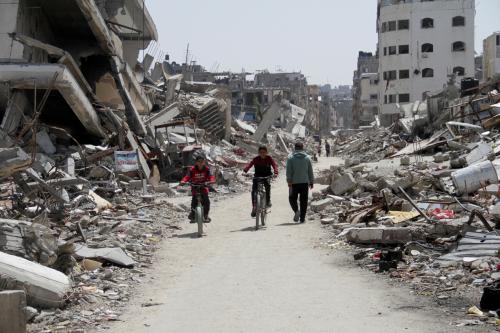Executive Summary
Lebanon and Israel have enjoyed a rare calm in the five years since the August 14, 2006 ceasefire that brought an end to that summer’s month-long war, the fiercest ever action waged between Hizballah and the Israel Defense Forces (IDF).
Both sides drew sharp lessons from the 2006 conflict. Despite fighting the IDF to a standstill in southern Lebanon, Hizballah experienced substantial—but sustainable—losses and its “divine victory” came at a cost. Hizballah lost its autonomy over the southern border district, its battle tactics were prematurely exposed, and it had to abandon the military infrastructure of bunkers and firing positions that it had installed over the previous six years.
Israel suffered the humiliation of underestimating its foe, and achieved none of its overly ambitious war goals. The IDF’s poor performance on multiple levels—leadership, coordination, logistics, and fighting capabilities—undermined Israel’s muchprized deterrent factor, and led to the perception of defeat.
The prevailing peace along the Lebanon-Israel border in the intervening five years is a result of both sides absorbing the costs of the 2006 war and the risks inherent in another round of fighting. Yet, although this is the longest period of tranquility along the traditionally volatile frontier since the late 1960s, the calm remains precarious and could be shattered at any time. Neither Hizballah nor Israel believes that the 2006 conflict will be the last battle waged between them, and both sides have been feverishly preparing for the next war ever since the last one ended.
Hizballah’s Posture
Since the end of the 2006 war, Hizballah has undergone the largest recruitment and training drive in its thirty-year history, swelling its ranks with dedicated cadres and reviving its former multi-sectarian reservist units. In terms of weapons procurement, Hizballah has focused on acquiring long-range rockets fitted with guidance systems to target a list of specific military and infrastructure sites in Israel. Hizballah also is believed to have received training on more advanced air defense systems that could pose an increased threat to low-flying Israeli air assets, such as helicopters and unmanned aerial vehicles.
With the support of Iran, Hizballah has made further advances in its signals intelligence (SIGINT) and communications capabilities. Hizballah is expected to use these upgraded weapons and SIGINT capabilities to play an offensive role in a future conflict with Israel, attempting to seize the initiative, rather than adopting the reactive and defensive posture of 2006. Among the new battle plans being prepared by Hizballah are land and seaborne insertions into Israel to carry out commando-style raids. Given the range of the missiles in Hizballah’s possession, the battlespace in the next war will likely be larger than the traditional theater of southern Lebanon and northern Israel, encompassing large portions of both countries.
The war preparations notwithstanding, Hizballah does not seek nor want another conflict with Israel at this time. Its strategy is based on deterrence, striking a “balance of terror” with Israel through a concept of reciprocity. In a series of speeches in the past three years, Sheikh Hassan Nasrallah, Hizballah’s leader, has warned Israel that it has the ability to inflict devastating blows against Israel on land and at sea in response to an Israeli attack on Lebanon.
Despite Hizballah’s jihadist instincts and ideological opposition to the Jewish state, it is beholden to two sometimes conflicting interests that have compelled it to honor the 2006 cessation of hostilities. First, Hizballah serves as a deterrent factor on behalf of Iran. Iran has invested millions of dollars in Hizballah since 2000 to boost its retaliatory capabilities, and as a result, planners of an attack on Iran and its nuclear facilities have to take into account the reaction of Hizballah. Second, Hizballah’s continued existence as a powerful force in Lebanon is dependent upon the support of its Shi’i constituency. No amount of Iranian funds would save Hizballah if it were to lose the backing of Lebanon’s Shi’i population. Therefore, Hizballah has to tread a fine line between following the edicts of Iran and respecting the interests of the Lebanese Shi’i community, the crushing majority of which does not want war with Israel.
Israel’s Position
Israel also has been busy implementing the lessons it learned from 2006 in preparation for the possibility of another conflict with Hizballah. The IDF has instituted greater logistical autonomy and sustainability in its combat units, and has strengthened the ability of its ground forces, navy, and air force to carry out joint operations. It also has trained extensively in large-scale ground operations, employing rapid maneuver techniques and using more robust and flexible equipment to reduce tactical vulnerability. The IDF created several urban warfare centers shortly after the 2006 war, the largest of which, the Urban Warfare Training Center (UWTC), simulates a variety of Lebanese villages, towns, and refugee camps.
The IDF has also introduced a number of new technologies that it is expected to use in any new conflict with Hizballah. These include a multi-tiered missile defense shield to intercept and destroy both Hizballah’s short-range and long-range weapons and Iran’s ballistic missiles. Also, all new tanks are now fitted with the Trophy defense system to protect against anti-armor projectiles. How these new systems cope in a war situation, and with Hizballah’s rocket barrages and anti-armor tactics remains to be seen.
Despite the IDF’s extensive military preparations, Israel still faces formidable challenges in another confrontation with Hizballah, and its options are less than perfect. A concerted attempt to smash Hizballah’s military capabilities once and for all would cause a large number of civilian casualties and infrastructure damage in both Lebanon and Israel, draw international opprobrium, and offer no guarantees of success.
The “Dahiyah doctrine” that Israel revealed in 2008, which calls for an intense bombing campaign against civilian infrastructure in Lebanon, serves as a factor of deterrence. But, its successful application is dependent on Hizballah quickly backing down and suing for a ceasefire, a most unlikely outcome. Instead, Hizballah is more likely to continue fighting in the hope of forcing Israel into a prolonged ground campaign, exactly the outcome the Dahiyah doctrine is supposed to prevent.
A Fragile Calm
Although mutual deterrence has prevented a repetition of the low-intensity conflict that existed along the Lebanon-Israel border from 2000 to 2006, the underlying factors that led to war five years ago still have not been addressed. The prevailing balance of terror is inherently unstable and even though both sides are aware of the risks of miscalculation, the chances of one side misreading the actions of the other remain dangerously high. In that regard, the uncertainties of the popular uprising in Syria could play into the Israel-Hizballah dynamic. Specifically, if the regime of Bashar al-Asad, the Syrian president, feels it faces imminent collapse, it could ignite a limited conflict with Israel in the Golan Heights, which could quickly escalate and drag in Hizballah, even against the latter’s will. If the Asad regime falls and the new leadership in Damascus decides to abandon its alliance with Iran and Hizballah, Israel may decide it is an opportune moment to attack Hizballah in the hope of permanently degrading its military capabilities and neutralizing the group as a future threat.
Ultimately, the likelihood of renewed war between Hizballah and Israel remains high in the mid- to long-term. It is critically important that as the Middle East convulses with the shockwaves engendered by the “Arab Spring,” the international community continue to play close attention to the nascent conflict under preparation in Lebanon and Israel.
Given that an accidental trigger is the most likely cause of the next war between Hizballah and Israel, diplomatic efforts should focus on ways to prevent misunderstandings from developing into conflict. In this context, the monthly tripartite meetings hosted by the UNIFIL commander which groups Israeli and Lebanese military representatives in Naqoura has proved to be an effective means of resolving issues linked to the United Nations-delineated Blue Line and a forum for advancing and addressing concerns voiced by either side. There also exists an emergency communications facility between the Lebanese Army and the IDF with the UNIFIL commander as go-between to resolve any pressing problems that cannot wait for the next tripartite session.
Yet, as long as the underlying political issues between Lebanon, Syria, and Israel are not negotiated, Iran continues to enrich uranium and build an extensive military infrastructure in Lebanon, and Hizballah and Israel aggressively prepare for another war, the chances of another, more deadly and destructive, conflict breaking out remains worryingly high.



